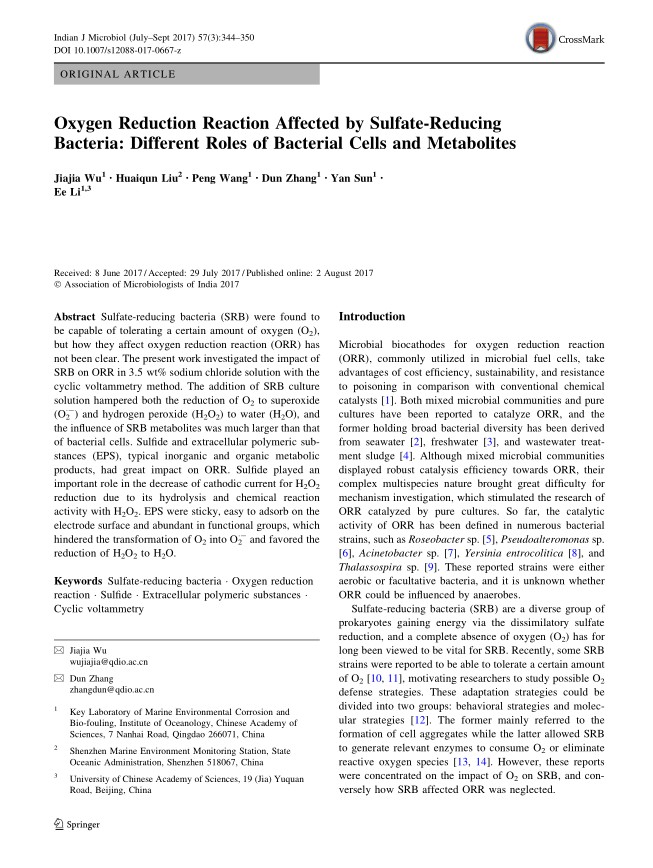Sulfate-reducing bacteria (SRB) were found to be capable of tolerating a certain amount of oxygen (O2), but how they affect oxygen reduction reaction (ORR) has not been clear. The present work investigated the impact of SRB on ORR in 3.5 wt% sodium chloride solution with the cyclic voltammetry method. The addition of SRB culture solution hampered both the reduction of O2 to superoxide (O·−2) and hydrogen peroxide (H2O2) to water (H2O), and the influence of SRB metabolites was much larger than that of bacterial cells. Sulfide and extracellular polymeric substances (EPS), typical inorganic and organic metabolic products, had great impact on ORR. Sulfide played an important role in the decrease of cathodic current for H2O2 reduction due to its hydrolysis and chemical reaction activity with H2O2. EPS were sticky, easy to adsorb on the electrode surface and abundant in functional groups, which hindered the transformation of O2 into O·−2 and favored the reduction of H2O2 to H2O.
